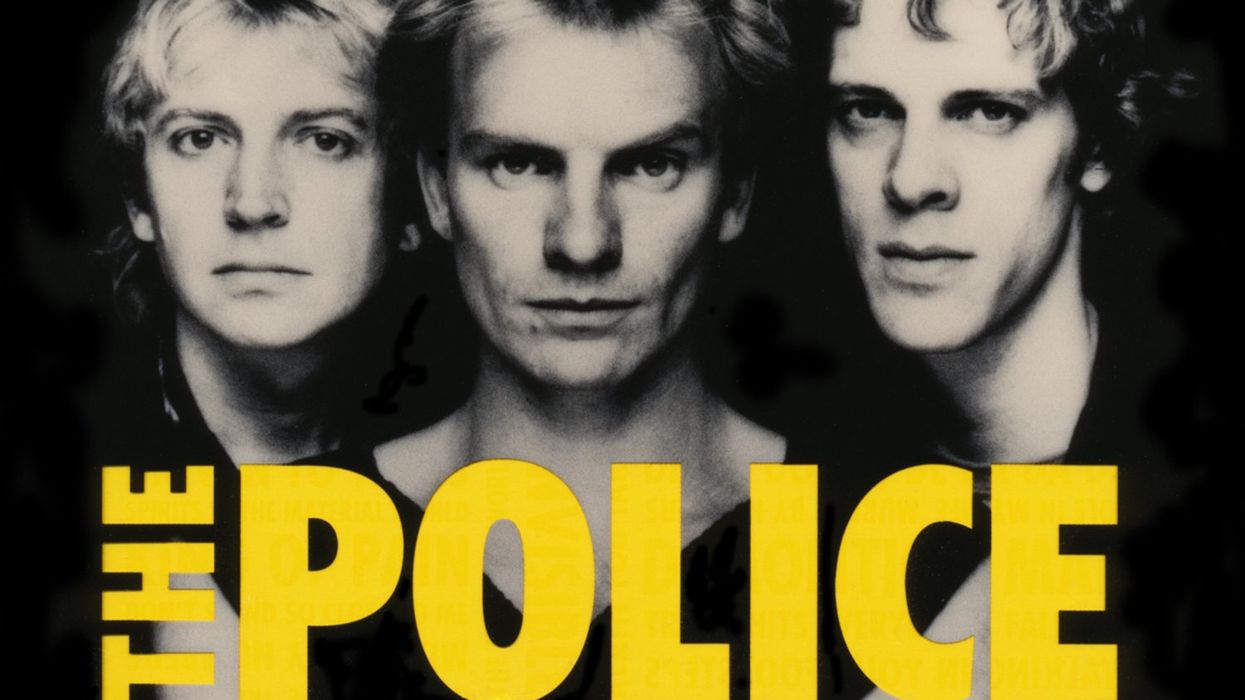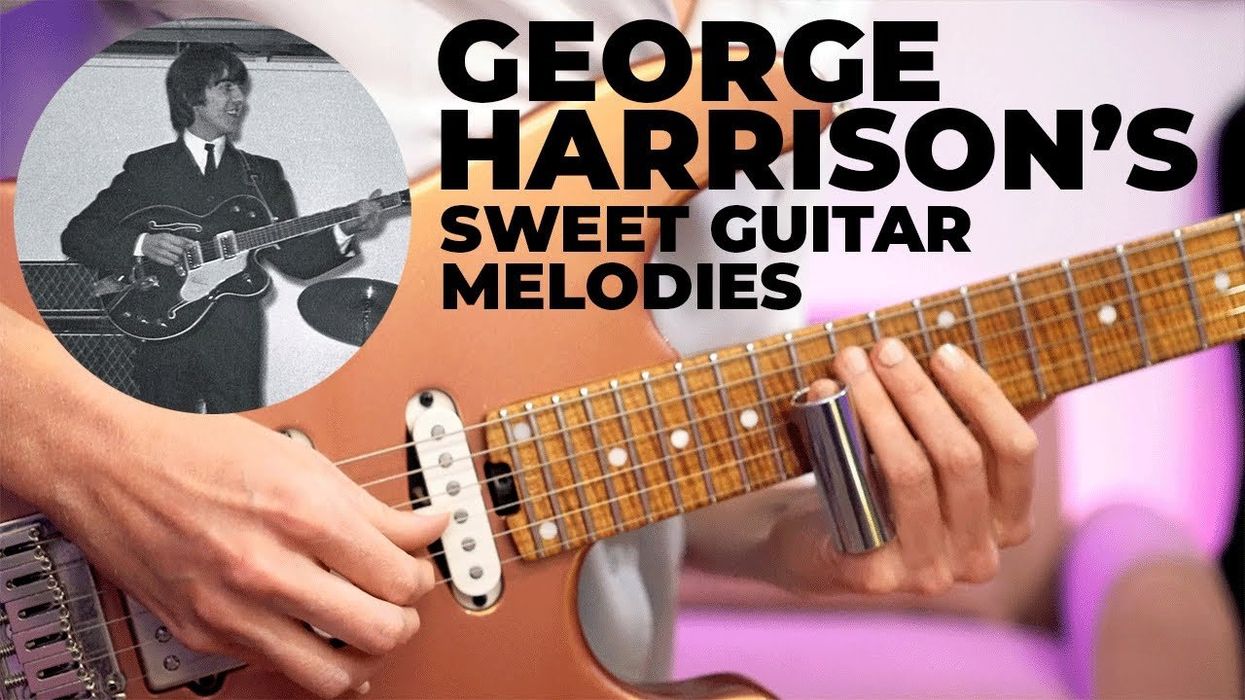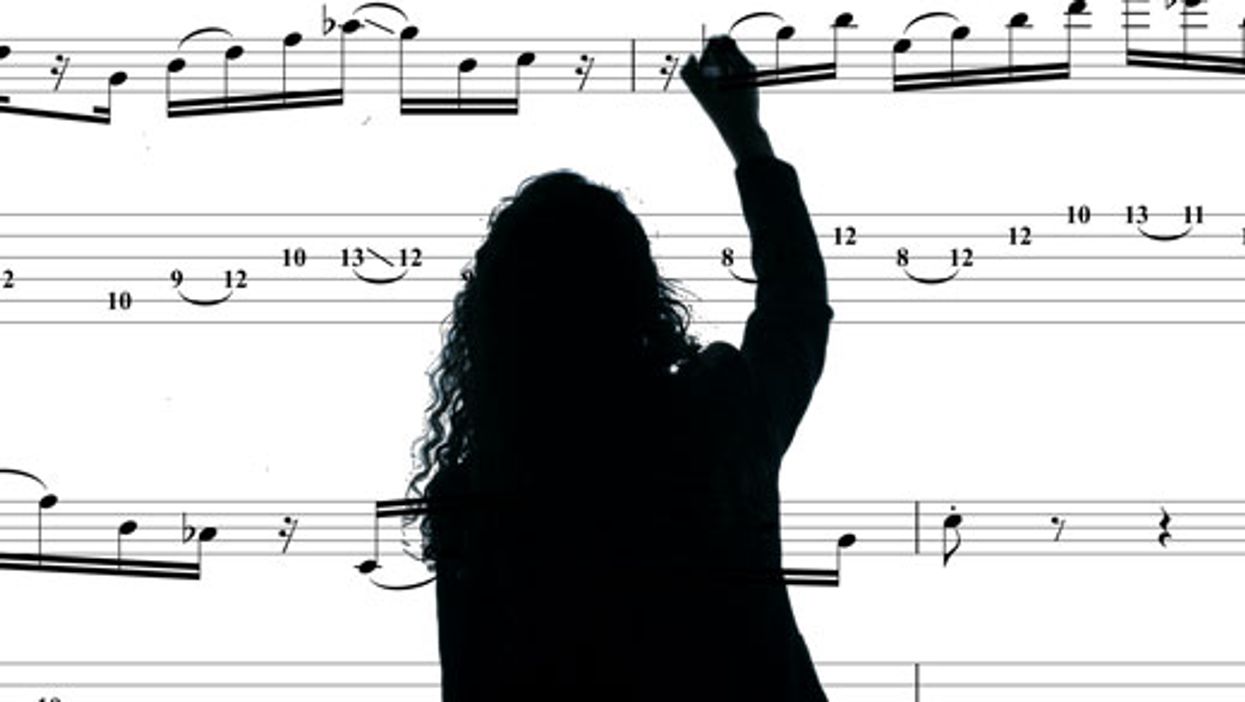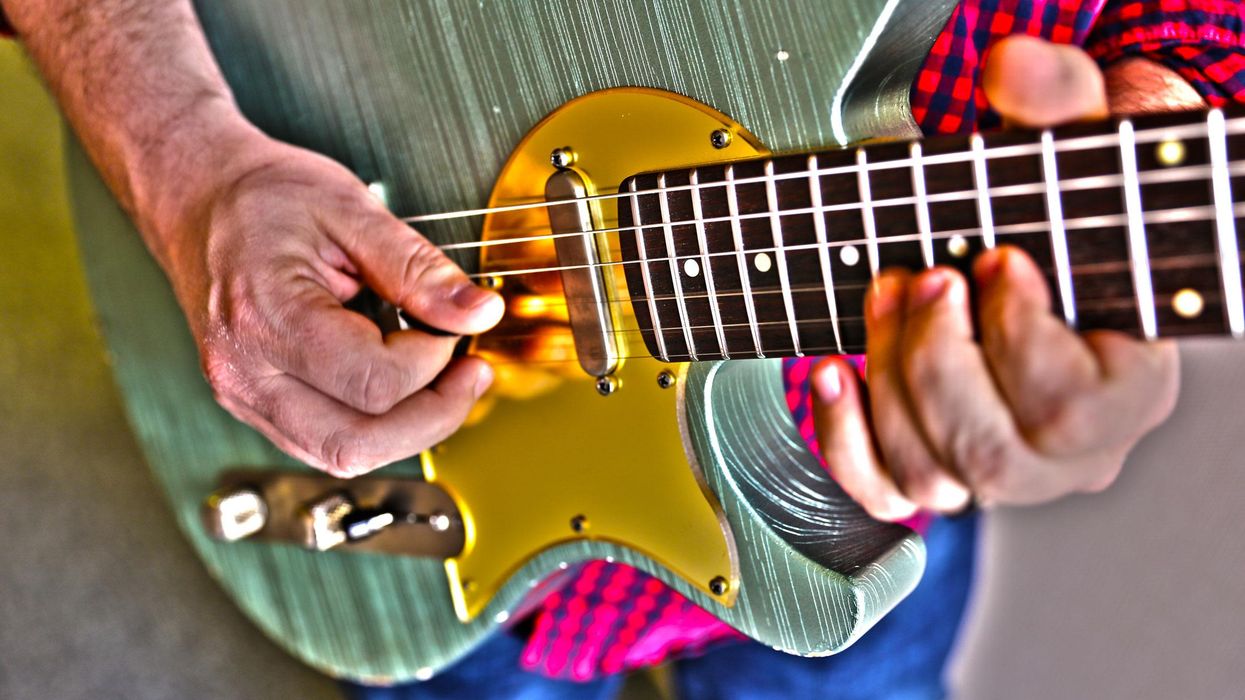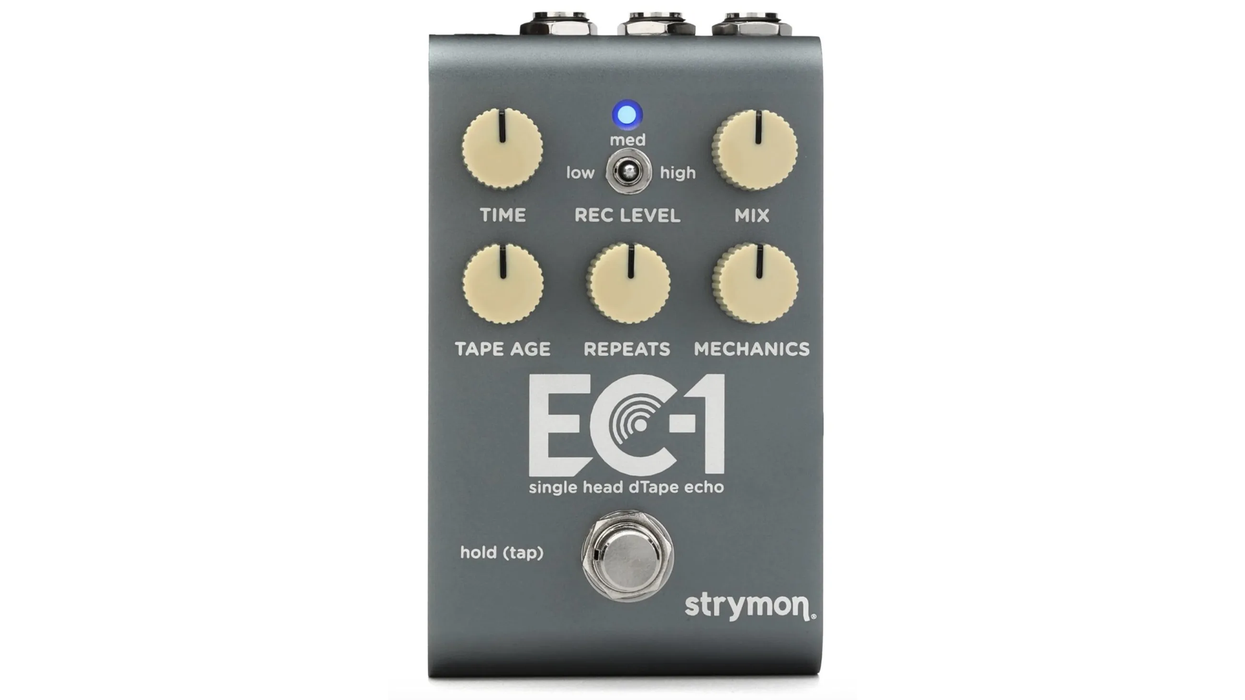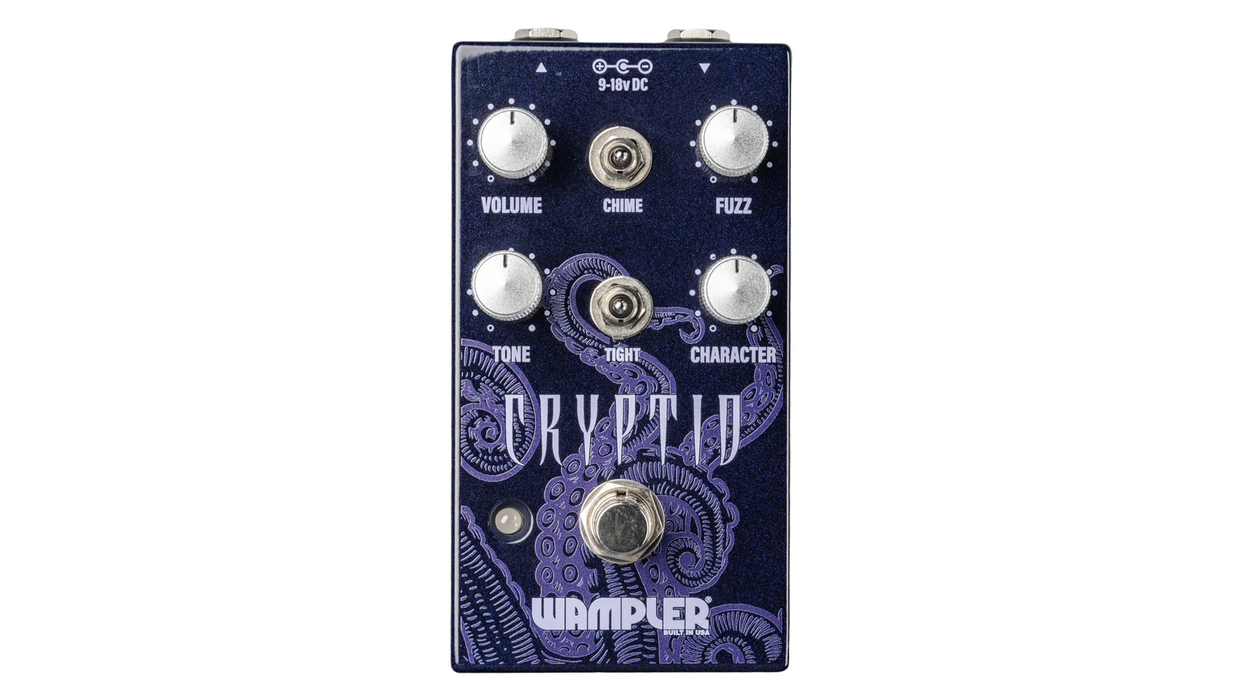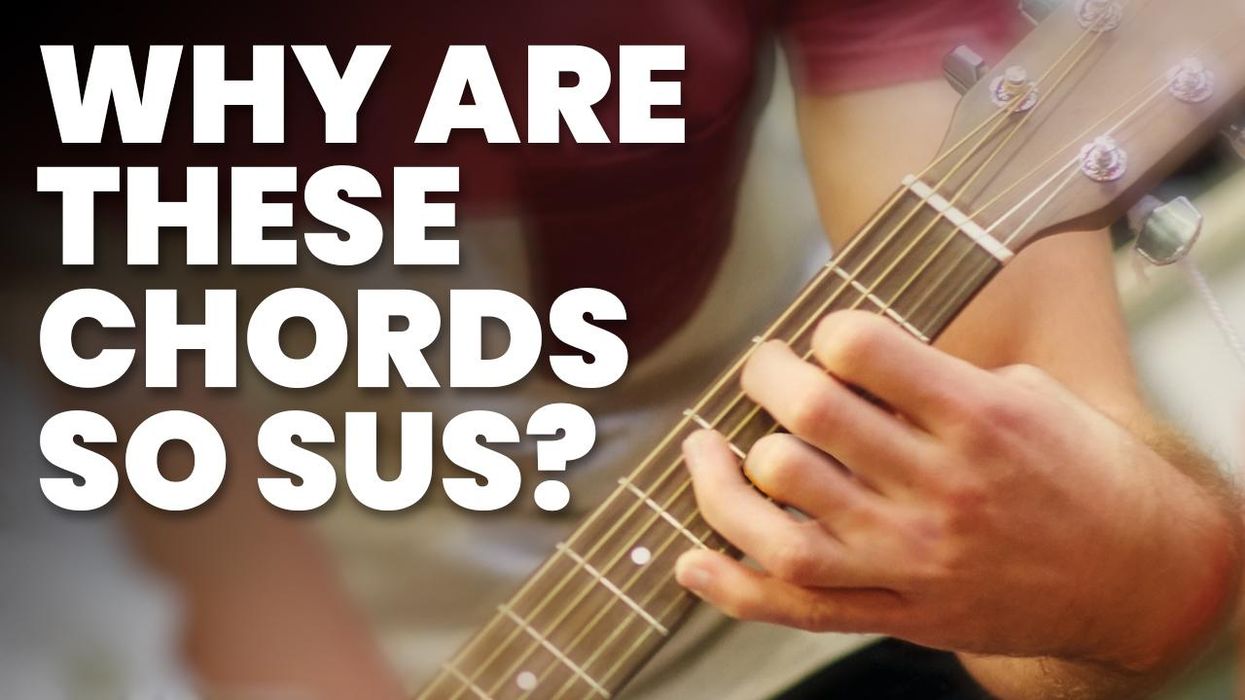Chops: Intermediate
Theory: Intermediate
Lesson Overview:
• Learn the history and formula behind pentatonic scales.
• Understand how to imply modal sounds with pentatonics.
• Create five-note scales based on Mixolydian, Lydian, and Locrian modes.
Click here to download a printable PDF of this lesson's notation.
When someone mentions pentatonic scales, it’s easy to jump to conclusions and visualize the ubiquitous minor pentatonic scale. But think about it: “Penta” is the Greek prefix for the number five, and in this case “tonic” could be interpreted as “note.” In other words, a five-note scale ... and that leaves us with many alternatives to investigate.
There’s a good reason guitarists are most familiar with the minor pentatonic scale: It works in many different minor-key situations. Following close behind the minor pentatonic in popularity is its relative counterpart—the major pentatonic scale. But if the broad definition of pentatonic simply means “five-note scale,” shouldn’t there be some other options here? If including five different pitches is the only rule we need to abide by, then we can explore many other tonalities with this concept.
For example, one possibility would be to create a pentatonic scale for each of the remaining five modes. As we know, there are seven notes in a major scale, as well as in each of the major scale’s modes. How would we know which five to choose from in order to create a great pentatonic scale? Well, the good news is that we actually have a bit of flexibility with this. In every mode there are a few notes that are necessary to include to establish its sound, but after that we’d still have a few slots left for some personalized choices. So for starters which notes are necessary to keep?
First of all, it’s a good idea to keep the tonic. The tonic, or 1st scale degree, is necessary for us to know where our “home” is. Next, we may want to keep the 3rd degree. Let’s look at the makeup of our seven modes:
Ionian (major): 1–2–3–4–5–6–7
Dorian: 1–2–b3–4–5–6–b7
Phrygian: 1–b2–b3–4–5–b6–b7
Lydian: 1–2–3–#4–5–6–7
Mixolydian: 1–2–3–4–5–6–b7
Aeolian (natural minor): 1–2–b3–4–5–b6–b7
Locrian: 1–b2–b3–4–b5–b6–b7
When we look at these seven modes, we can see that each of them contains either a natural 3 or a b3. This means that some of them will work in major-sounding situations (natural 3) and the others work best in minor settings (b3). If we reorganize these modes according to whether they live in the major or minor realm, they look like this:
Major-sounding modes: Ionian, Lydian, Mixolydian.
Minor-sounding modes: Dorian, Aeolian, Phrygian, Locrian.
Since the 3rd degree of the mode defines the broad tonality of the scale (minor or major), I’d say it’s important to include that note in a pentatonic scale. Furthermore, every mode has one specific characteristic note—a note that defines its particular sound and differentiates it from similar modes. For instance, as seen below, the characteristic note in Lydian is the #4, because it is the only note that differentiates it from the Ionian scale. So let’s take a look at the characteristic notes within the seven modes:
Ionian (major): 4
Lydian: #4
Mixolydian: b7
Dorian: 6
Aeolian (minor): b6
Phrygian: b2
Locrian: b5
Based on the fact that the root tells us where our tonic center is, the 3 defines our overall minor or major tonality, and the characteristic note defines our specific mode. So these three notes would be beneficial to include in our modal pentatonic scales. However, we still have room for two note choices and there are four other scale tones to choose from. So how do we decide on the two remaining ones? Each remaining note in the scale will give us a different color, so we have a variety of choices.
For example, if we want to create a Dorian pentatonic, we would start with 1, b3, and 6. In Ex. 1, I’m going to add 2 and b7 for the remaining notes. I chose the b7 because it’s an additional note that helps describe the fact that we are in a minor tonality (it’s part of a minor 7 chord), and it also differentiates between Dorian and melodic minor—another scale that contains both a b3 and natural 6. I chose the 2 because I like the tension it creates. It’s just enough to be a nice color, but it’s not so tense that you can’t stand the sound when sustaining it. This creates our Dorian pentatonic scale (1–2–b3–6–b7).
Click here for Ex. 1
What is one of the most common situations in which guitarists use a minor pentatonic? Most people would argue for the blues. All of the chords in a typical blues progression are dominant 7 chords (1–3–5–b7). When we look at the content of our familiar, go-to minor pentatonic, we notice that it contains 1–b3–4–5–b7. So how come so many people play this scale over the blues? Shouldn’t the b3 in the scale played over a natural 3 in the I chord create a massive clash? Here’s the kicker: in theory, the b3 and the 3 clash. However, one possible explanation for why this works is that this clash is in fact the sound of the blues. It’s this clash that often characterizes the sound we all associate with blues guitar.
That said, it doesn’t mean that playing a minor pentatonic is our only melodic option over dominant 7 chords. Since the Mixolydian scale contains all the chord tones of a dominant 7 chord, it’s easy to create a pentatonic version that works great. Ex. 2 offers one option for a Mixolydian pentatonic (1–3–4–5–b7). As you can see, this time I included the 5th degree. The reason I did so was to create a connection between our familiar minor pentatonic scale and this particular Mixolydian counterpart. If you notice, the only difference between these two scales is the 3, and this degree is present because our new pentatonic scale is based on a dominant 7 arpeggio rather than a minor 7 arpeggio.
In this example, I only used the b3 from the minor pentatonic scale as a passing tone to the natural 3, and again in the very last note of the solo, to illustrate the typical blues sound. I also allowed myself the “blue note” (or b5) as a passing tone, as it is another blues hallmark.
Of course, this is only one of the possibilities we have for a Mixolydian pentatonic. Feel free to mess around with other options, such as 1–2–3–6–b7. Once again we have our root, 3, the Mixo-characteristic b7, plus two other color-note options.
Click here for Ex. 2
Ex. 3 explores a new mode: Lydian. Once again, for the purpose of including both the characteristic note as well as the entire arpeggio associated with this scale (major 7), I chose 1–3–#4–5–7. Another option would be to take our familiar major pentatonic (1–2–3–5–6) and replace the 5 with the #4 to give it that Lydian flavor. That way, we create something that is similar to the major pentatonic we’re used to, but thanks to the replacement, it screams very specifically that we’re in Lydian instead of a vague major-y kind of sound.
Click here for Ex. 3
Ex. 4 takes the road less traveled—the often overlooked m7b5 chord. While most guitarists don’t encounter the Locrian mode very often, we do sometimes see the m7b5 chord. We are likely to see this chord acting as the IIm in a minor-key progression. I’ve definitely, more than once, been in the situation where I encounter that chord and scratch my head as to how I can best play over it (other than using Locrian or the parent scale).
Creating a pentatonic scale out of this mode has always been a great-sounding and efficient solution for me. Similarly to Ex. 2, we simply swap out the 5 in a minor pentatonic scale for a b5. Once again, that note is the one difference between the root chords associated with these two scales. As in the previous examples, we have some flexibility on note choices. I would say it’s a good idea to keep the arpeggio in this one, but it can sound really good to replace that 4 with a 2 (if you’re just playing over the m7b5 chord) or a b2 if you’re in a total Locrian scenario—which almost never happens.
Click here for Ex. 4
Using the same logic, we can do more than just create different pentatonic scales for our modes. Don’t forget that we can also create new options for our existing minor and major pentatonic scales. The cool thing about starting with our original major or minor pentatonic scales is that you can decide whether or not you want to tilt them toward a certain modality. Notice that our traditional minor and major pentatonic scales don’t include any of the characteristic modal notes. That is not a coincidence! This is done so we can have a starting palette with which to play over a basic tonality, and we can later insert those two modal characteristic notes back into the scale if we want to specify a certain mode, rather than imply it. In other words, we can have a neutral, vague sound if we’d like, or a more specific modal sound if we’d like.
Ex. 5 presents an alternative idea for a minor pentatonic scale: 1–2–b3–5–b7. This one changes the 4 to a 2, so it still doesn’t specify a particular mode. For sure we’re not in Phrygian, but we still don’t know whether we’re in Dorian or Aeolian. We can choose to be in either, and sometimes it’s nice to have options.
Click here for Ex. 5
Ex. 6 offers yet another option for a minor pentatonic. This time, we’re adding the b6 and thus specifying that the minor sound we’re going for is Aeolian (natural minor). Notice how the backing track is exactly the same as Ex. 5, to help illustrate the tonal difference between this version of the minor pentatonic and the previous one.
Click here for Ex. 6
Most guitarists I know have dedicated a good portion of their time to playing a pentatonic scale of some kind. We all know at least one, and we’ve all been there. I figure some new options might be welcome to both those who love the minor pentatonic and are looking to expand on the concept, and those who may be sick of it and are searching for new ideas. Some of us (myself included) may even find it’s hard to confine ourselves to just five notes, but it’s a beautiful challenge to create something musical with just a few tools.



